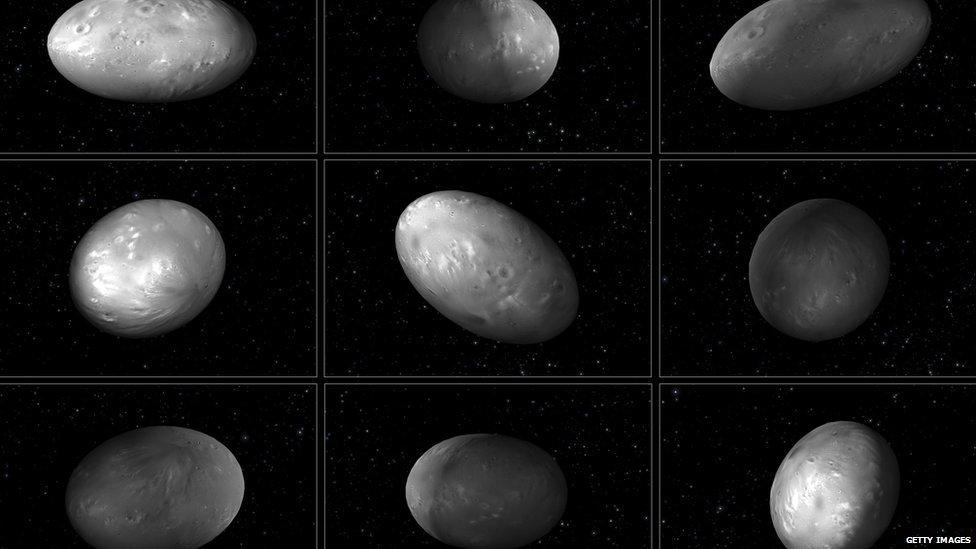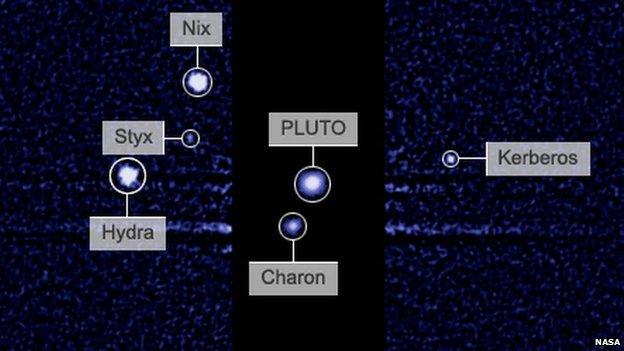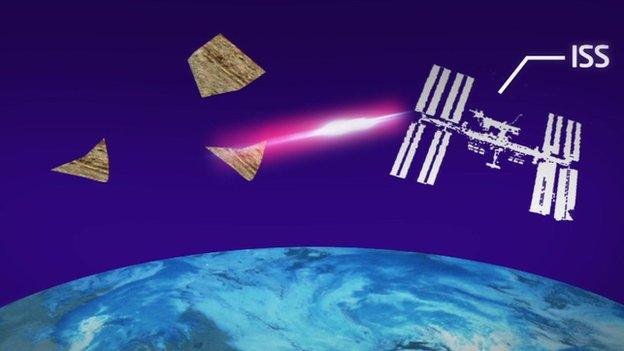Hubble telescope studies Pluto's wobbly moons
- Published

A computer model shows how the moon called Nix tumbles unpredictably
Scientists have discovered that Pluto's moons travel in a series of unusual directions.
They made the discovery after analysing ten years of data from the Hubble telescope.

The Pluto system has five known moons.
This is different to how our Moon travels around the Earth.
We only ever see one side of the Moon because the time it takes for it to spin on its axis is almost exactly the same as the time it takes to orbit the planet.
However this isn't the case for Pluto's moons.

Artist's view of Pluto: All will become clearer when New Horizons passes through on 14 July
Scientists think this unusual motion is enhanced by the moons being roughly the same shape as a rugby ball rather than a football.
"If you can imagine what it would be like to live on [these moons], you would literally not know where the Sun was coming up tomorrow," said Mark Showalter from the Seti Institute, US.
Experts will get a clearer picture of their findings in six weeks time when the moons are passed by Nasa's New Horizons spacecraft.
- Published24 April 2015

- Published10 December 2014

- Published11 May 2015

